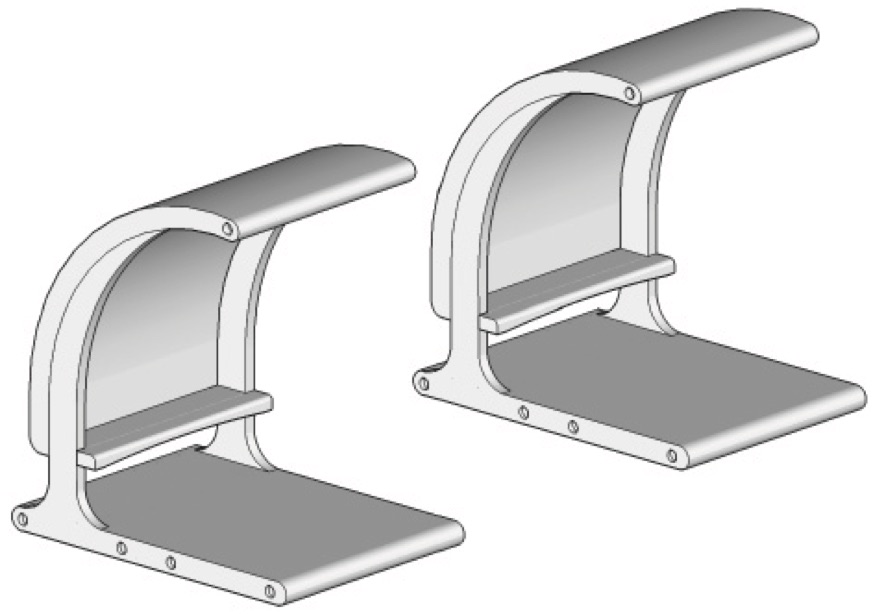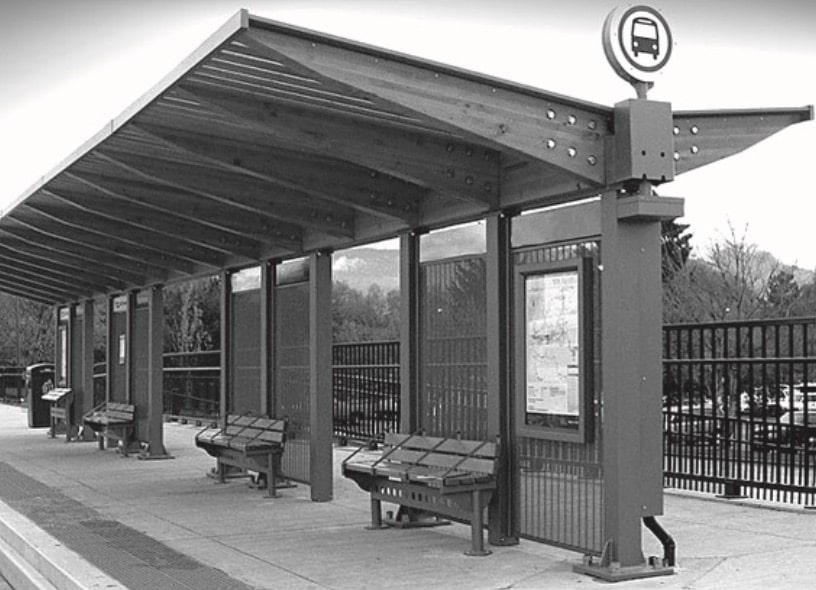Which mechanical property describes an object that is under load and follows Hooke's Law?
- Ductility
- Elasticity
- Malleability
- Plasticity
Aussie Maths & Science Teachers: Save your time with SmarterEd
Which mechanical property describes an object that is under load and follows Hooke's Law?
\( B \)
\(\Rightarrow B \)
The steel used in the chassis members was tested.
The load–extension graph represents the data collected during the testing of a specimen of the steel.
Before testing, the specimen was 1020 mm long with a cross-sectional area of 100 mm².
--- 8 WORK AREA LINES (style=lined) ---
--- 4 WORK AREA LINES (style=lined) ---
i. Young’s modulus
`F = 20 xx 10^3\ text{N}, l = 1020\ text{mm}, e = 1\ text{mm}, text{A} = 100\ text{mm}^2`
| `E` | `=(Fl)/(eA)` | |
| `=(20 xx 10^3 xx1020)/(1 xx 100)` | ||
| `=204 xx 10^3` | ||
| `=204\ text{GPa}` |
ii.
i. Young’s modulus
`F = 20 xx 10^3\ text{N}, l = 1020\ text{mm}, e = 1\ text{mm}, text{A} = 100\ text{mm}^2`
| `E` | `=(Fl)/(eA)` | |
| `=(20 xx 10^3 xx1020)/(1 xx 100)` | ||
| `=204 xx 10^3` | ||
| `=204\ text{GPa}` |
ii. Elastic deformation is produced by the 20 kN load.
The reinforced concrete modules shown are designed for public seating. A typical use would be as a bus shelter.

A 12 mm diameter steel reinforcing bar was used in this seating module. During a proof test, a load of 26 kN extended a 0.9 m length of this reinforcing bar by 1 mm.
Calculate the value of Young's Modulus (E) for this bar. (3 marks)
--- 6 WORK AREA LINES (style=lined) ---
`206.9\ text{GPa}`
`sigma=F/A=(26\ 000)/(pixx6^2)229.9\ text{MPa}`
`epsilon=e/L=1/900=1.1111 xx 10^-3`
| `E` | `=sigma/epsilon` | |
| `=229.9/(1.1111 xx 10^-3)\ text{MPa}` | ||
| `=206.9 xx 10^3\ text{MPa}` | ||
| `=206.9\ text{GPa}` |
The diagram shows a scaffold with diagonal braces.
When loaded, the diagonal braces are typically subjected to which pair of forces?
`D`
`=>D`
Why is the routine testing of engineering components important during service? (2 marks)
--- 4 WORK AREA LINES (style=lined) ---
A bus shelter is shown.

The design of this bus shelter includes the use of toughened glass panels.
Outline advantages of using toughened glass for this bus shelter. (3 marks)
--- 6 WORK AREA LINES (style=lined) ---
An annealed copper tensile test specimen has an original cross-sectional area (CSA) of 100 mm².
During testing, an engineering stress of 150 MPa is induced within the specimen before necking occurs. At this strain the CSA reduces uniformly by 10% to 90 mm².
This is illustrated in the diagrams below.
What is the value of the true stress induced at this strain?
`D`
| `sigma` | `= F/A` | |
| `150\ 000\ 000` | `= F/0.0001` | |
| `F` | `= 15000\ text{N}` |
`:.\ sigma\ _(text{True})= (15\ 000)/90= 166.7\ text{MPa}`
`=>D`
The diagram represents a 120 kg beam that is being guided into place by a crane.
Use a scale drawing to graphically determine the tension in the two cables attached to the beam. (3 marks)
--- 6 WORK AREA LINES (style=lined) ---
The diagram shows a 10 kg lamp hanging from a cable over a cycle path.
What is the tension in cable `A` ?
`B`
Solve graphically:
`=>B`
The diagram shows a simply supported beam in equilibrium. It is loaded with a single force (`text{F}`) as shown.
Which of the following angles is closest to the angle of the reaction force to the horizontal at the fixed bearing?
`B`
`=>B`
A 100 mm long M16 × 2 bolt is used in the concrete decking of a bridge. The bolt has a thread length of 50 mm.
--- 6 WORK AREA LINES (style=lined) ---
--- 6 WORK AREA LINES (style=lined) ---
i.

ii. `47.9\ text{kN}`
i.

ii. Find max load of bolt:
`text{Yield stress} = 476\ text{MPa, Bolt diameter = 16 mm}`
`text{Allowable Stress}= 476 -: 2=238\ text{MPa}`
`text{Area (bolt)}\=pir^2=pi xx 8^2=201.1\ text{mm}^2`
| `text{Max Load }` | `=\ text{allowable stress × area}` | |
| `=238 xx 10^6 xx 201.1 xx 10^(-6)` | ||
| `=47\ 861.8\ text{N}` | ||
| `=47.9\ text{kN}` |